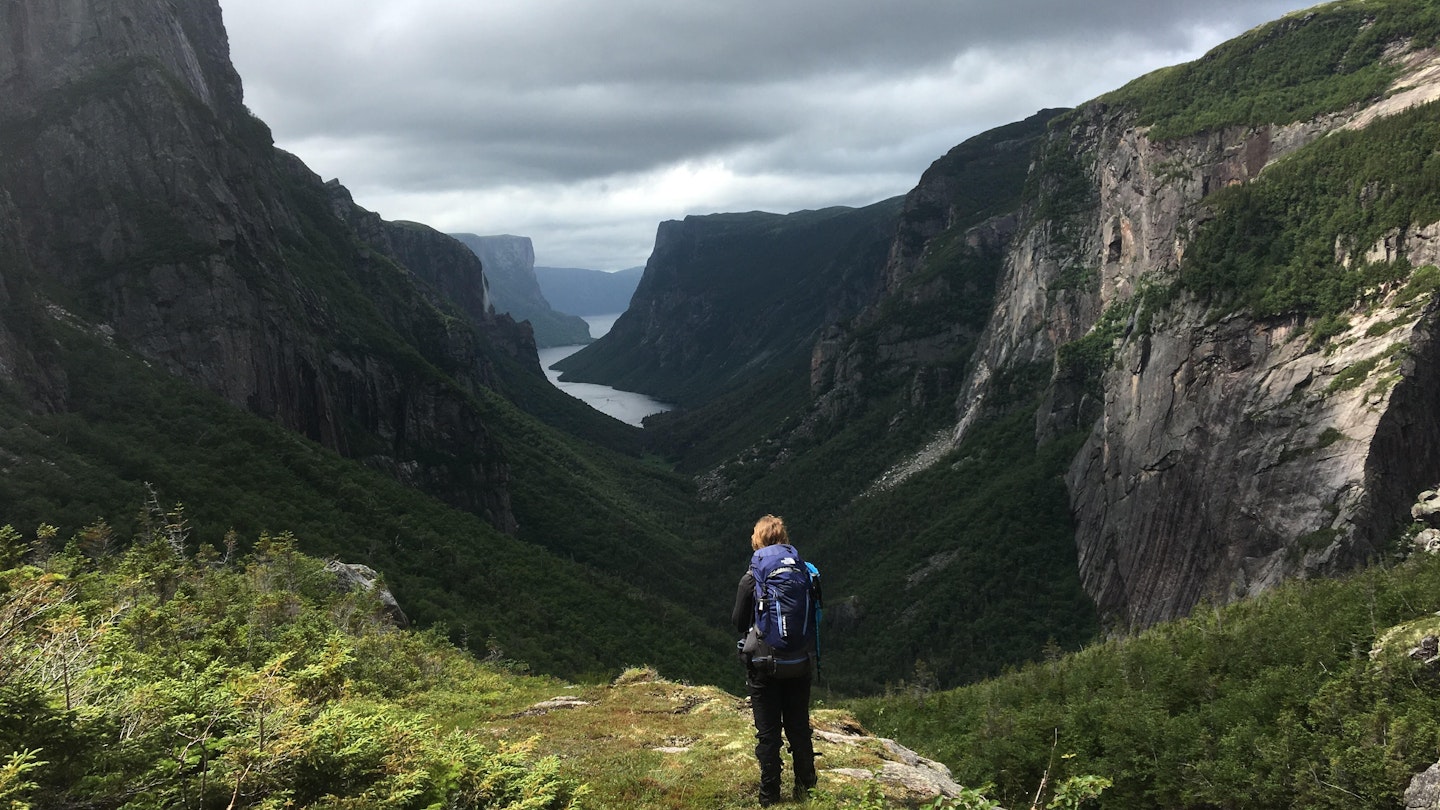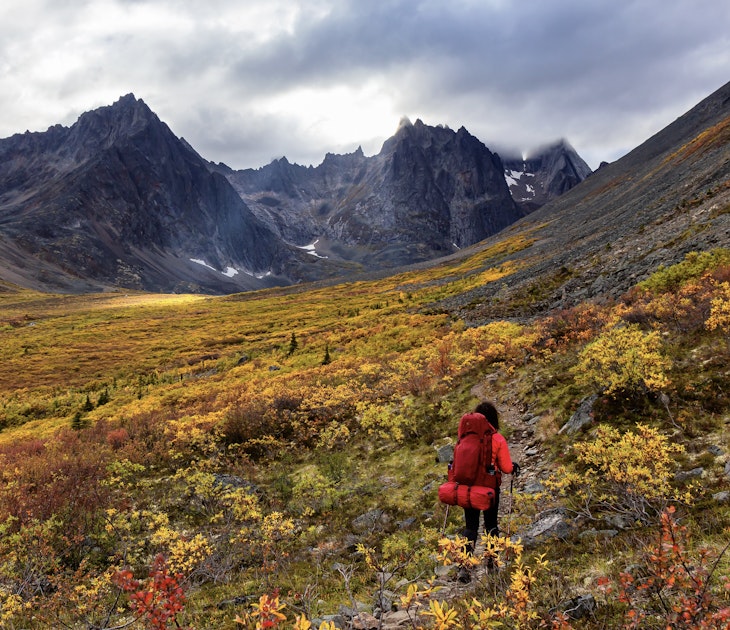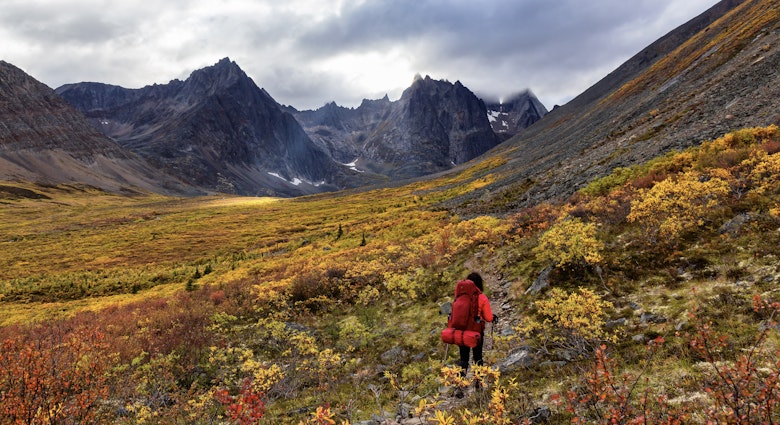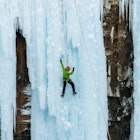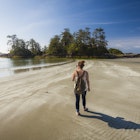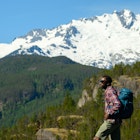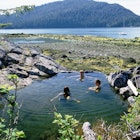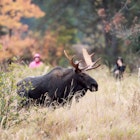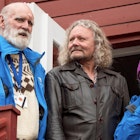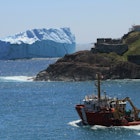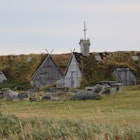Passing between dramatic, 1000ft granite cliffs, deep inside glacier-carved gorges, around thundering waterfalls and through the lush, indigenous forests of Newfoundland, the Long Range Traverse is one of the hardest and most remote hiking trails in Canada.

Famous for its thick fog, ever-changing weather, astounding views and absolute remoteness (you won't find cell service on the entire trek), the trail has traditionally been reserved for those "in the know" – you're required to pass a strict navigational test to traverse alone because of its location and 8/10 degree of difficulty. With very few marked trails, you're left to your own (or your guide's) devices when it comes to forging through the thick and unforgiving brush, and deep into the unknown of the Northeastern wilderness.
One of Canada’s hardest hikes, this four- to six-day trek spans the Gros Morne National Park, a beautiful expanse and Unesco World Heritage Site. With only 12 hikers allowed on the trail per day, it's welcome isolation – a chance to actually get into the wild in a way few other places in the world allow.
"It’s one of the few true traverses that have no defined trail markings and features this incredibly inspiring mix of wild pristine wilderness,” says Andy Nichols, an expert guide with Gros Morne Outdoor Company.
Even if you enter the park in the best shape of your life, with momentous and inspiring hikes behind you, nothing can prepare you for your first rock scramble, where you will climb over and through slippery rocks and boulders as a rushing waterfall cascades just next to you.
"This hike requires a degree of understanding of true backcountry hiking – not something many visitors understand,” says Steven Wheeler, co-owner of Gros Morne Outdoor Company. “The views are spectacular, as you pass by fjords, and glacially carved mountains. And finally, the lack of people provides a unique and intimate experience. It’s a harsh but beautiful landscape."

Comprised of rolling mountains, sprawling forests with thick brush and spongy moss bogs, and multihued limestone cliffs, this 450,000-year-old park touts some of North America's most complex geography. Along with lush green surroundings that rival those of Scotland and Ireland, the park is also home to the Tablelands – a piece of the Earth's mantle that's often hidden well beneath the crust. It's a place where scientists discovered plate tectonics. Most of the park can be seen during the hike, with ample moments to just stop and stare at the incredible vistas before you without any distractions.
The hike itself begins after a scenic 15-minute boat ride to Western Brook Pond, where you reach the trailhead. Thick with carnivorous pitcher flowers (the emblem of Newfoundland), amber-colored cloudberries bursting with sweet flavor and tall, willowy Arctic cotton, the initial steps will leave you feeling equal parts overwhelmed and enamored. As you continue to walk (with a heavy backpack strapped to you), guides urge you to soak up the surrounding beauty before the real trek begins.
Your first rock scramble comes just a few hours after you begin. A steep gorge, which sits next to a cascading waterfall, is the only way up, so you’re left to grapple with slippery rocks and erratic foliage on your way up.
“The ascent up the gorge from our drop-off point is a tough climb to say the least,” Steve says. “People often have to use their hands to grip boulders, roots, whatever they can, to hoist themselves up… to say it’s a trail would be misleading.”

After bouldering or rock scrambling your way to the top, you might want to give up. However, most guides will suggest tackling the extra 6.5km walk to Little Island Pond, one of the first campsites for the trek. You'll be soggy from the waterfall splashes and soaked with sweat from the heat of the sun, but your first night in the park will be accompanied by a symphony of birds, faraway moose and the calming rustle of trees soothing you to sleep.
“The sights and sounds of Little Island Pond are an amazing experience to wake up to and offer stunning views of the Long Range Mountains. It’s a 5.5km walk by glacially carved ponds, alpine meadows, streams, and granite outcrops,” Andy says.
The scenery may have been picturesque up to now, but the next portion of the hike presents the challenge of a deep and tricky river crossing, without a bridge or rope in sight. Thankfully, most guided-tour companies outfit you with waders and loan waterproof pants to keep you dry. According to Andy, you never know when the weather or the trails may change in front of you.
“The most difficult part of the trek that most people don't understand is that you have to navigate within a terrain that all looks very similar. Most people think they are on a trail, but it’s mostly game trails or animal leads,” Andy says. “Once the weather closes in, you can have days of fog or rain, which can leave you turned around and make the landscape look the same. It’s not just a walk in the park but a true challenge,” he adds.

The walk towards 10-mile-pond is arguably one of the hardest, but is by far the most beautiful. Upon arriving, most trekkers notice the silence almost immediately. If you’re lucky enough to camp between two of the small ponds overlooking the Gulch, you’ll get the chance to witness one of the park’s breathtaking sunsets, which light the sky in hues of orange and pink.
For Steve and Andy, this sunset isn’t out of the ordinary – another perk of having grown up with such a magnificent natural playground right outside their door.
“Growing up here, we were always given the chance – or encouraged – to go and explore our backyard, our community, our province and country. This had us playing on the beaches and roaming alongside these magical hillsides as soon as we could,” Andy says.
The last day is a full one, with 10km of challenging paths going up and down Gros Morne Mountain and around Ferry Gulch. As your first day brought rock scrambling, your last day will bring 'bum sliding' as you strap your pack to your front and slide down the mountain on your backside, weaving around rocks, plants and even small firs. However, as you start to approach the platform that takes you back to civilization, you’ll probably find that the return feels bittersweet, and that you leave spiritually affected and forever changed.

For Steve, it’s something that can’t really be put into words. It’s a way of life he’s simply just grown up with, and one he’s grateful to share with anyone willing.
“I’ve been guiding for around 10 years, it’s in my blood. I love being immersed in the outdoors, staying in a tent, traveling with a group of people over the landscape,” he says. “But more than that, I like sharing that experience. As time passes, I get used to the experience, but every time you get a new group, and you spend some time with them, you relive that novel experience with them – you see it all through new eyes again.”
You might also like:
Stepping out: the world’s best long walks
The top 10 US long-distance hikes
What is backpacking? The eternal travel debate
